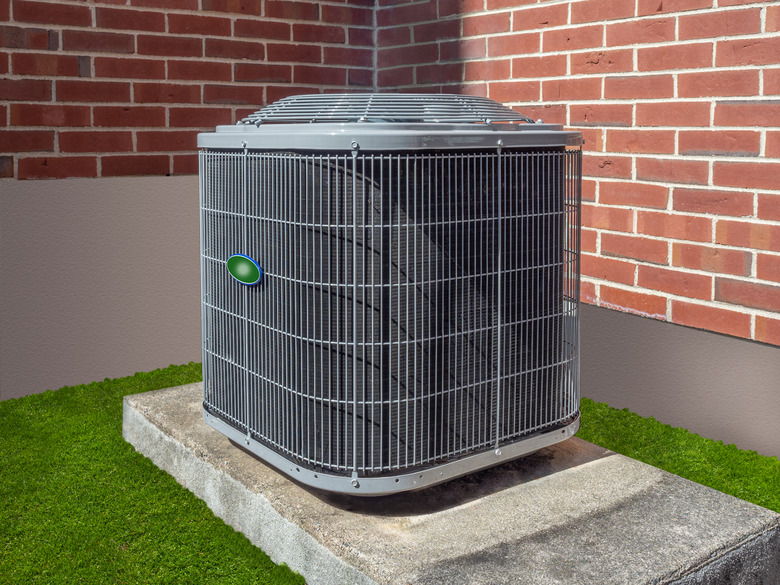How Often Should You Put Bleach Down An Air Conditioner Drain Pipe?
We may receive a commission on purchases made from links.
Bleach more often is poured into a clothes washer, but it also has anti-microbial properties that make it useful for air conditioning systems. Because air conditioners produce water through condensation as you operate them, they are prone to mold and algae. Chlorine bleach is used to clear blockages caused by these and prevent future growth of these organisms, but it is only effective if you use the bleach in the correct manner. Properly timing bleach applications to your air conditioning system should prevent microbial growth in the system without becoming a burdensome chore.
Tip
Clean and disinfect the condensate drain pan and pipe before using the air conditioner in spring and again in fall. If maintenance is required, apply an additional cup of bleach or diluted bleach solution after clearing clogs or cleaning the drain pan and pipe.
Why Use Bleach?
Why Use Bleach?
Bleach kills the mold and algae that grow in the air conditioner condensate drain pan. These thrive in the moist environment produced by the air conditioner's condensation. The water in the pan is stagnant and slightly warmed by the air conditioner's motor. These produce ideal conditions for the growth of mold and algae.
Over time, debris, contaminants, bacteria, and algae build up in the condensate drain pan and drain pipe, causing blockages. In addition, you risk mold spores being released into the air circulating throughout the home. Bleach helps to kill these organisms and prevent future growth, keeping you and your family healthy.
Removing Clogs First
Removing Clogs First
Before you reach for the bleach, make sure that the condensate drain pipe is dripping water outside. If the air conditioner is running and no water appears or there's water inside and under the unit, the drain pipe may be clogged.
Put on gloves and safety goggles to protect your hands and eyes while cleaning the pan and before handling chlorine bleach. Turn off your air conditioning system at the breaker box before performing maintenance and cleaning. If you're able to access the condensate drain pan, wipe it out and remove debris that has accumulated inside and around the drain pipe.
Use a wet/dry shop vacuum to clear clogs. Alternately, use a manually operated pump, plumber's snake or brush to clear the pipe. Put the vacuum or pump hose on the outside end of the drain pipe and suck out the clog. After removing debris and/or clogs, proceed with disinfecting the drain pan and pipe.
Using Bleach in Air Conditioners
Using Bleach in Air Conditioners
If the condensate drain pan or pipe are metal, you should use a cleaner formulated for use with air conditioners. Alternatively, you can dilute chlorine bleach to reduce its potency so that it does not corrode the interior of the pan and pipe. Mix 1/4 cup bleach with 1 cup hot water and pour it into the pipe that leads into the condensate drain pan.
PVC pipe and pans are not affected by the corrosive nature of chlorine bleach, but be careful to not splash the bleach onto the evaporator coils or other metal parts of the air conditioner. Use a funnel and slowly pour 1 cup of bleach into the pipe, followed in 30 minutes by a gallon or two of fresh water to flush out the bleach and rinse the pan and drain pipe. In addition, if the drain pipe drips into the landscaping, use a bucket to catch the bleach water and pour it into the laundry sink.
Timing of Bleach Applications
Timing of Bleach Applications
Bleaching should not be done too often because excessive use can be corrosive to metal components of the air conditioner, condensate drain pan and drain pipes. In general, check your air conditioner before you start it up for the warm-weather season and after the season ends. Add the bleach solution to the drain pan and pipe at each check of the system, followed by a gallon or two of warm water to flush out the bleach and any lingering dirt and/or debris.
In addition, when using chlorine bleach, never mix it with other cleaning solutions, including ammonia, vinegar and air conditioner cleaning tablets. Follow all the precautions and warnings on the label to avoid producing dangerous toxic fumes.
